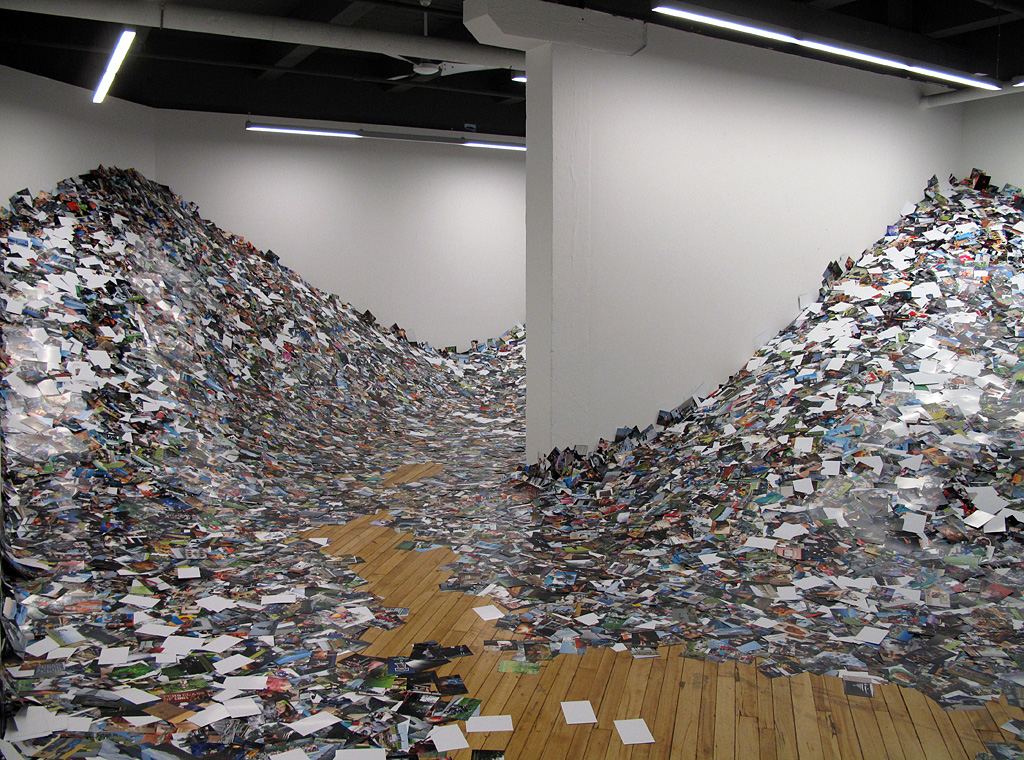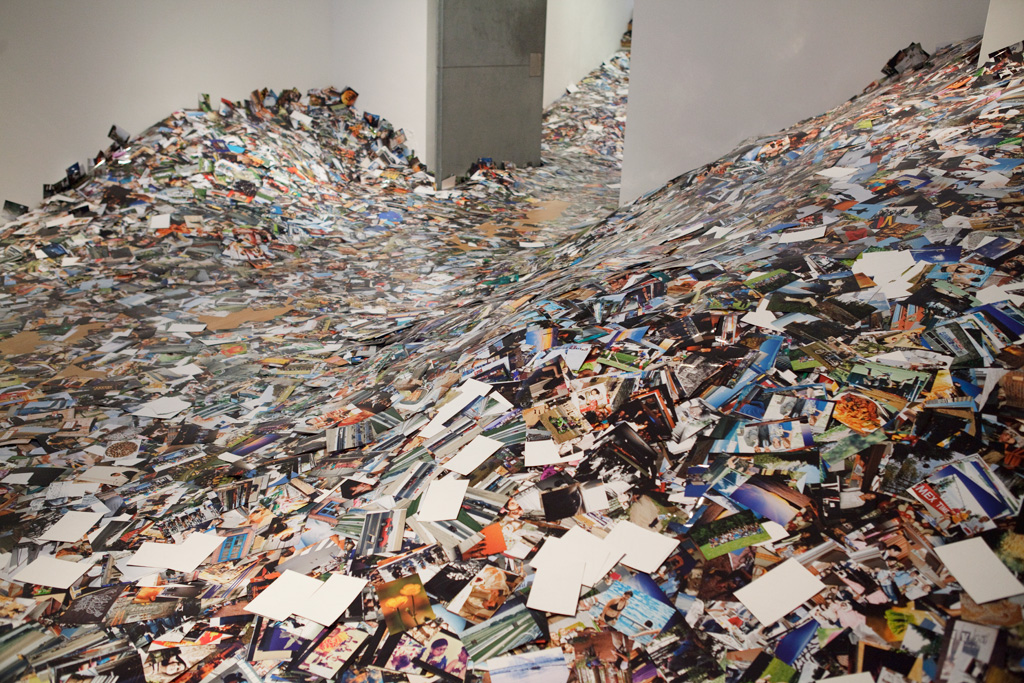Erik Kessels 24hrs in Photography
24hrs in Photography explores our shifting relationship to photography during a hypermediated era, in which internet users are bombarded with images on a daily basis. Erik Kessels’ immersive installation of vernacular photography, originally conceived for the exhibition What’s Next at Foam (2011), reveals how the limited frame of a computer screen can present an expansive view of the world. An indeterminable number of freely circulating images depict a multitude of people, places, and events across the globe.
Kessels’ diverse biography informs this unique project: he began his career as a commercial illustrator and is now founding partner and creative director of the advertising agency KesselsKramer (Amsterdam), editor of the alternative magazine Useful Photography, publisher of several books of photographs, and curator of noted international photography exhibitions. What each of these endeavours has in common is an obsession with vernacular photography that fuels an impulse to collect. Like any collector, Kessels’ desire to archive is guided by self-imposed parameters; the prints that comprise 24hrs in Photography were downloaded from all of the free and accessible images uploaded to the photo- sharing site Flickr by amateur photographers in a single 24-hour period—about one million images. Shown for the first time in North America, the installation at the CONTACT Gallery features a random selection of 350,000 photographs, printed and arranged in such a way as to represent the volume of the total download. The heaps of images that the viewer encounters are overwhelming in their plenitude.
The photographs comprise a landscape constructed out of photo paper; visitors are invited to walk on and through the installation. Just as readily, one might lie upon the photographs, resting for a moment on a mattress made of other people’s memories. A tension develops through these embodied interactions with the installation: we can peruse the images as singular representations of individuals and events deemed important enough by someone that they have been documented and put online; in contrast, the exhibition is also experienced as an undifferentiated mass of prints that is greater than the sum of its parts. This tension is palpable in the installation’s imposing physical presence in the gallery, and evokes apprehensions about the carefree ways in which we represent our lives to ourselves and to others online, often without concern for who might be looking, and why. Ultimately, the photographs exist simultaneously as precious memories and paper detritus, in a complex balance that considers how the internet challenges conventional investments in the photographic medium’s ability to create cherished material representations of our most significant moments.
24hrs in Photography takes an intersectional approach in its exploration of media, commenting on photography to the extent that it is shaped by social media, and encouraging the viewer to reflect upon the ways of seeing the world engendered by our interactions online. Kessels’ work manifests what it feels like to be confronted by the slew of images we encounter each day via our networked computer screens. Though hundreds of thousands of images might seem reasonable stored on a server, the volume takes on an entirely different scale when placed into the “older” physical form of print. The monolithic installation renders Flickr’s database form absurd: crucial functions such as searchability become impossible, replaced by other means of encountering the installation such as perusing, wading, or even climbing. Sifting through 24hrs in Photography, we are faced with the lasting implications of the speed at which we document, circulate, and consume images online, a pace that mirrors the frenetic rhythms of our contemporary, mediated lives.
Supported by Hewlett-Packard Canada.
Curated by Bonnie Rubenstein

